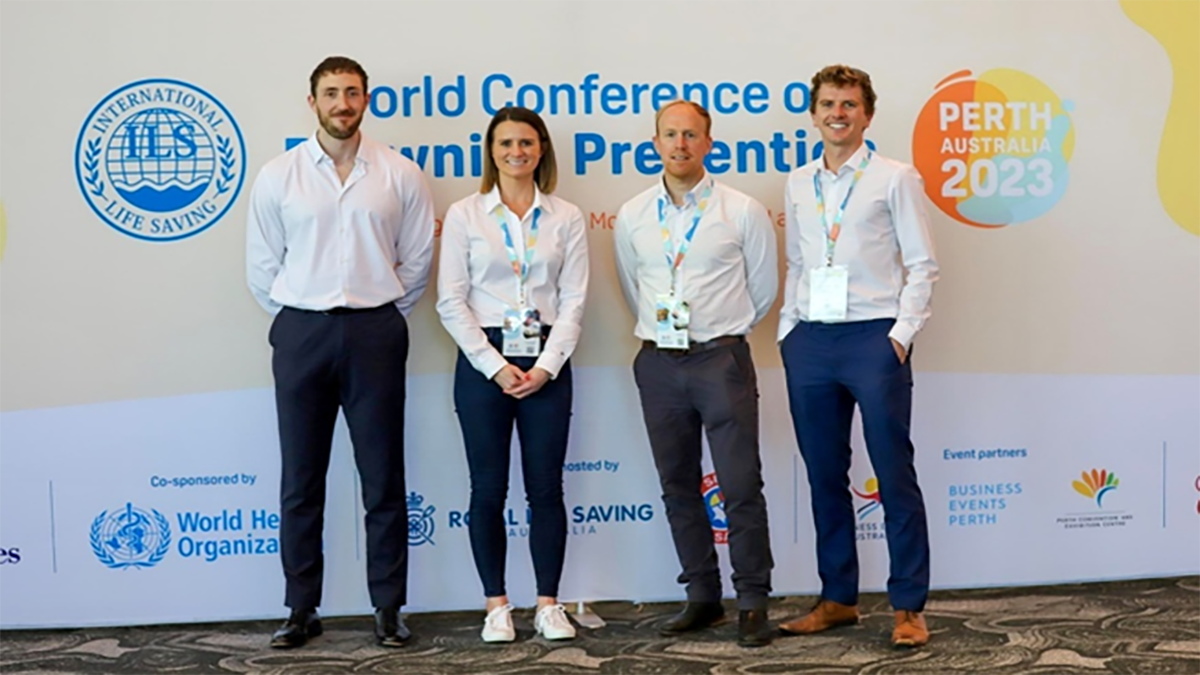
According to the World Health Organisation, drowning is a leading cause of unintentional injury and is responsible for over 236,000 deaths worldwide every year, imposing a significant emotional and financial burden on society. Resolutions by the United Nations General Assembly and World Health Assembly in 2021 and 2023, have highlighted drowning as a highly preventable global public health issue and called for accelerated action on drowning prevention.
I recently presented research at the World Conference on Drowning Prevention in Perth, Australia alongside fellow PhD student Nicola Johnston and our doctoral supervisor, drowning prevention and water safety expert, Professor Martin Barwood. Our PhD research is rooted in Sport and Exercise Science and public health specific to drowning.
It was a pleasure to be in Australia discussing water safety with other researchers from around the world. The research we presented at the global conference focused on people’s perceptions of their floating capability in water, with a view to contributing to the evidence base for floating as a method of self-rescue from drowning difficulty in water.
My fellow PhD student, Nicola Johnston, presented research on defining and characterising environmental risk factors including cold water and rip currents, that are associated with drownings in the United Kingdom. This study involved systematically gathering the views of experts with the aim of influencing interventions to contribute to reducing national drownings.
Professor Martin Barwood discussed how Leeds Trinity University’s programme of research on risk factors is aligned with the World Health Organisation policies and strategies for preventative interventions.
The four-day conference, which aimed to shape global drowning prevention strategy and mobilise action, was attended by over 750 leading drowning prevention, lifesaving and water safety academics, practitioners, and organisations from over 50 countries. The gathering included discussion on drowning prevention and water safety, ranging from novel AI and machine learning solutions for detecting hazardous rip currents, to best practices for increasing participation in swimming and water safety lessons.
Some key takeaways from the conference include that everyone has a role to play in drowning prevention and water safety, even if it means just sharing safety messages to keep friends and family safe. Notably, drowning is a global issue, but it affects low- and middle-income countries the most, where significant impact could be made. And finally, climate change, migration and disaster contribute to drowning deaths and should be factored into future drowning prevention strategies.
How to be safe around water this winter
Although most drownings in the United Kingdom happen during the warmer summer months, cold water remains a significant risk factor for drowning during colder months. Therefore, we encourage people to think carefully about safety when in, on, or around water, for example, by knowing and sharing these key safety messages:
- If you get into difficulty in water, Float to Live. Turn onto your back and float. Tilt your head back with your ears submerged, relax and try to breathe normally. Move your hands to help you stay afloat.
- If you see someone in difficulty in water, Make the Right Call. Stay on land and call 999. Ask for fire and rescue if inland, or the coastguard if at the coast. Keep them in eyesight and tell them to float on their back. Throw something to help them float.
- Be Coast Clever. Know your surroundings and be aware of the environment around yo For example, stay away from cliff edges and be careful of getting trapped by tidal waters. Be careful around inland water environments.